The Andrews Forest has produced cutting-edge long-term research for decades. Moving forward, they look to the treetops—and new technology—to understand the intricacies of the forest.
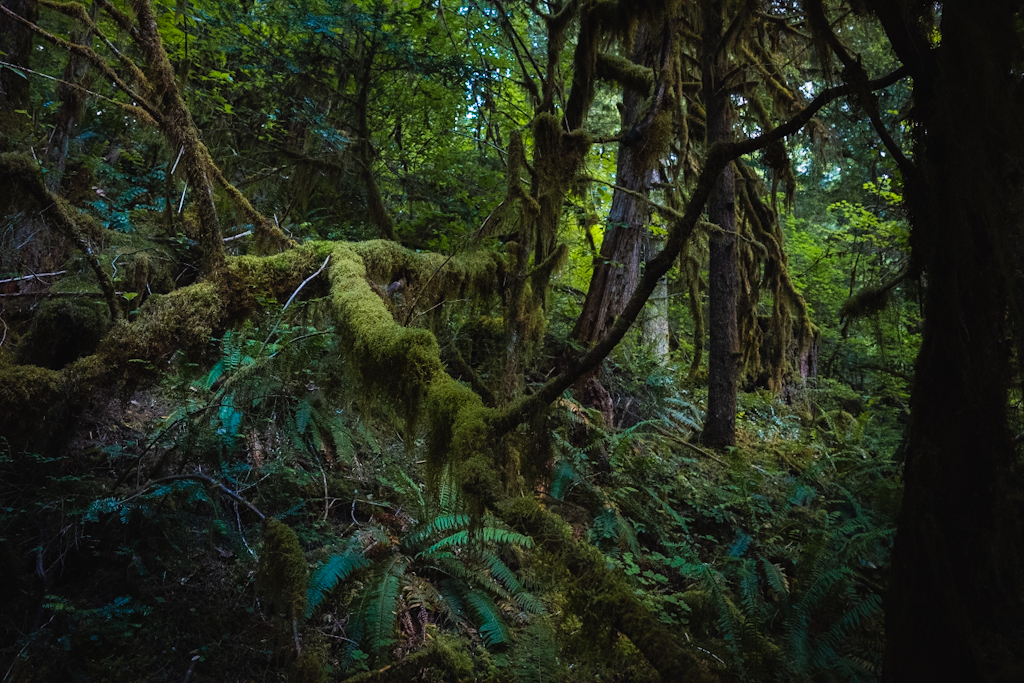
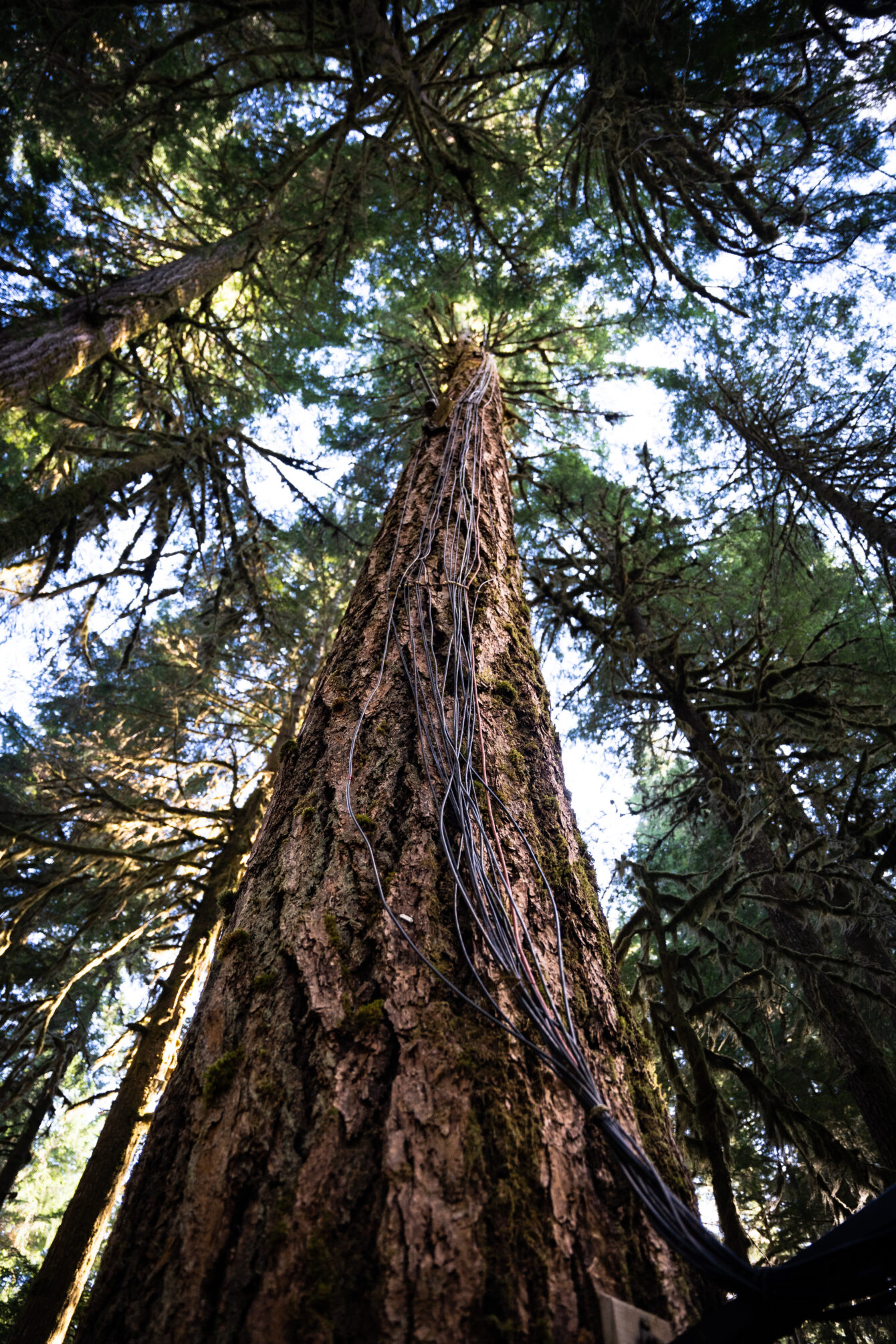
A visitor walking through the deep old growth forest at the Andrews Forest Long-Term Ecological Research site must watch their step. Fallen logs and unstable soil lay waiting for a misstep—and in the right spot, so do electrical cables.
The cables power sensors that paint a picture of microclimates in the forest canopy. As the trunks stretch towards the sky, variables such as sun exposure and relative humidity change, creating pockets in the treetop with a completely different climate than the surrounding air. The sensors measure these pockets nearly continuously throughout the year.
Canopy microclimates are a new frontier for the forest. Previous microclimate research at Andrews focused on the forest floor. Researchers could just walk into the undergrowth and take measurements or deploy sensors. The results from this research revealed a complicated patchwork of microclimates in the forest with serious implications for climate and species research. But that microclimate picture omitted the entire vertical dimension—often hundreds of feet high.
Refuge in the Canopy
Nina Ferrari, a graduate student at Oregon State University, finds herself routinely suspended from ropes high above the forest floor. She studies how canopy microclimates affect bird community structure in the forest—and as a result, often needs to climb to the treetops. The Andrews Forest sensor network is the backbone of her research, and the newly sensored forest canopy allows her to expand fundamental ecological questions into unexplored territory.
Ferrari and her advisor, Andrews Forest LTER Lead PI Dr. Matt Betts, think that canopy microclimates might allow different species of birds to coexist without having to directly compete for resources by occupying a particular microclimate. Indeed, a classic ecology experiment in the 1950s showed that individual warbler species in other forests stick to certain sections of a single tree to avoid competition. A long body of research has confirmed the phenomenon in other species and landscapes.
But the story is complicated at Andrews. Some sections of the forest are undisturbed old growth. But much of the forest was once logged, creating a different set of environmental conditions—and potentially altering microclimates in the canopy dramatically.
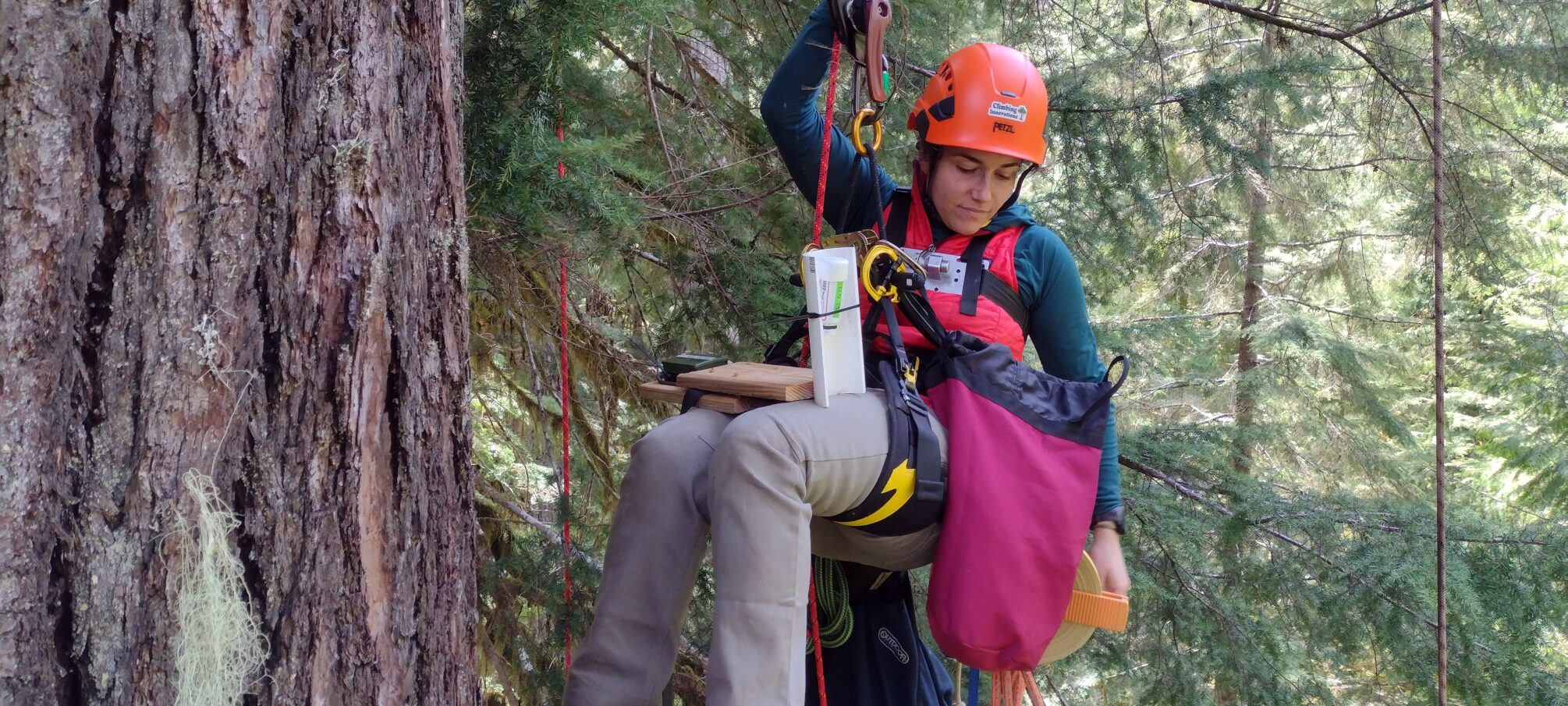
Are canopy microclimates dramatically different in old growth and second growth forests? Do bird species at Andrews divide their territory according to these microclimates? Which species are involved? Do species partition differently in old growth and second growth forests?
Ferrari outfitted 14 trees with the suite of microclimate sensors to collect data that might answer these questions. But she also had to add a new type of sensor to her trees: sound recorders. These sensors record bird calls, identifying which species are nearby. With several recorders placed along a trunk, Ferrari hopes she can triangulate the calls and figure out exactly where each bird is hanging out. By combining microclimate data with the vertical location of birds, Ferrari should be able to see if microclimates determine species niches in the forest.
Ferrari’s work is just one example of how the sensor network lays the foundation for a huge variety of research. Already, the network has revealed new water dynamics in the canopy. Dew, it turns out, provides a significant amount of water to trees during otherwise dry seasons—a previously uncharacterized finding immediately apparent after outfitting trees with moisture sensors. Or, another researcher correlated epiphyte abundance to vertical microclimates—a precursor to Ferrari’s work with more difficult to study mobile birds.
A new home?
Ferrari’s research, along with other projects at Andrews, seeks to understand how microclimates influence species distributions across the forest. But what happens if the forest changes? Can species adapt? Will they migrate? Will some lose out?
Climate change is expected to change the forest in myriad ways. Recent studies at Andrews show that microclimates can buffer those climate effects, providing temperate refuge for local species. But if climate change forces forest species to converge in small areas of refuge, a new set of complications emerge.
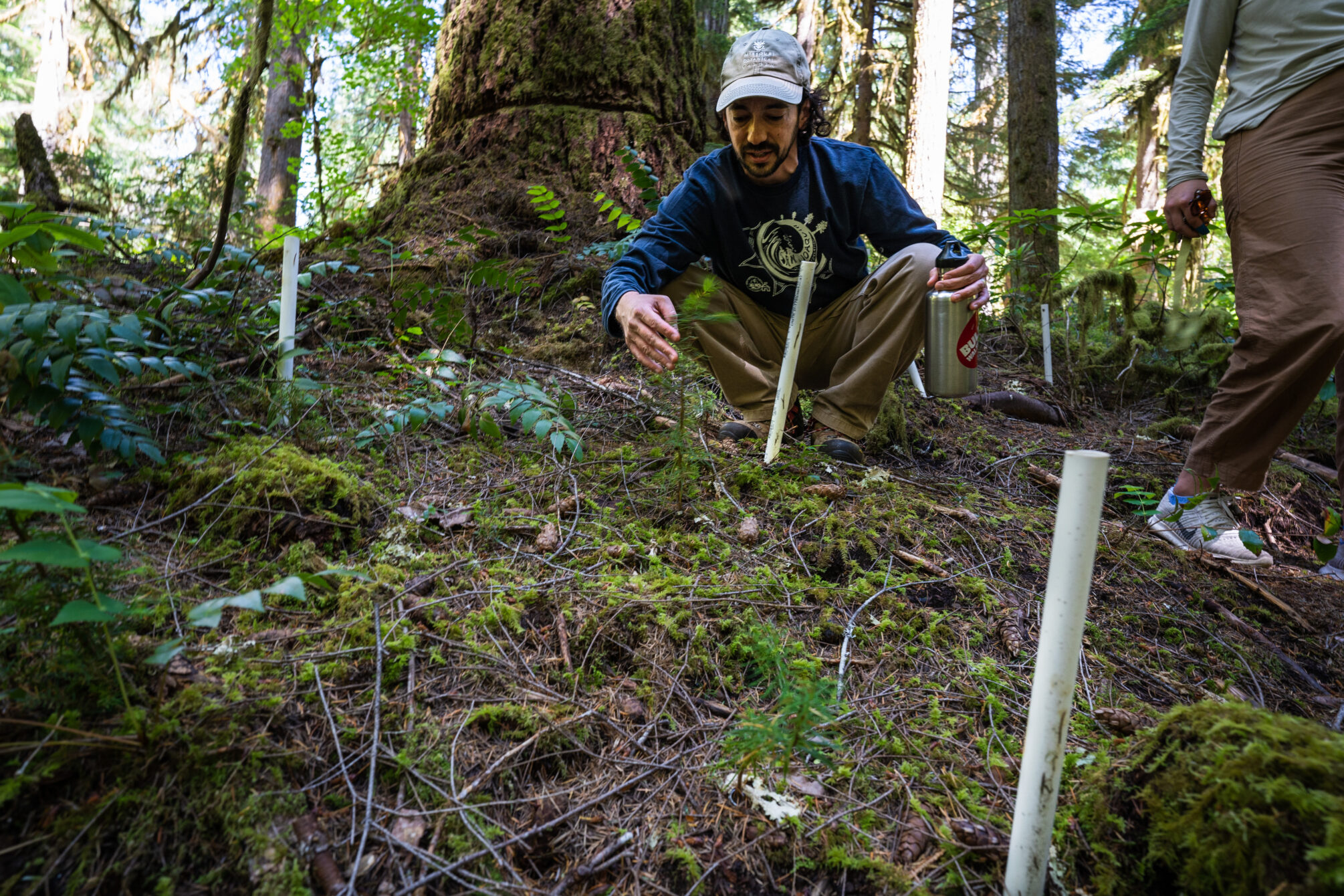
Dr. Joseph LaManna, a researcher at Marquette University, oversees a suite of research designed to explore the impacts of climate induced species migrations within the forests, alongside collaborators Dr. Jeff Diez (University of Oregon), Dr. Posy Busby (Oregon State University), and Bruce McCune (Oregon State University). Specifically, Dr. LaManna and his colleagues want to know how competition between newly colocated species plays out in different zones around the forest.
His research design revolves around dozens of transplant plots. Species whose habitats are expected to overlap in the future are transplanted into a meter wide experimental plots. Cole Doolittle, a graduate student in Dr. Lamanna’s lab, along with postbac fellow Ethan Torres, have transplanted seedlings all around the forest to cover a wide range of environmental conditions. Plots are replicated in old growth and second growth plots, or in zones with different elevations or soils, for example.
Dr. LaManna explains that competition between different species is, in part, dependent on the surrounding environment. For example, a nitrogen loving plant species will outcompete others in nitrogen rich plots, but might lose out under nitrogen deficient conditions. By placing his plots all over the forest, he hopes to understand competition across the wide range of conditions at Andrews. And, of course, the microclimate sensor network helps him chart conditions at each plot.
Sound bait
Dr. LaManna’s team transplants several different taxa: plants and lichen plots are found all over the forest. Most ambitious, however, is their plan to transplant birds.
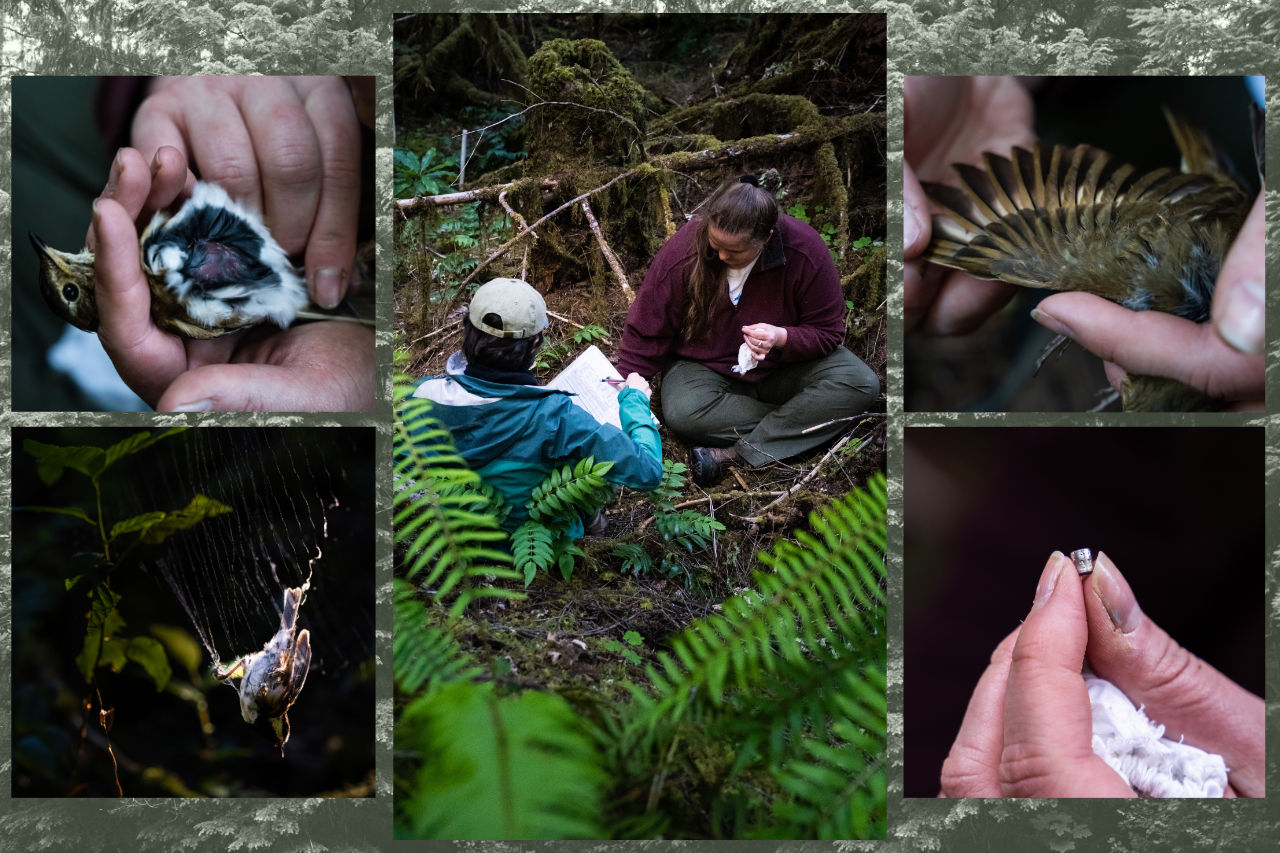
Researchers at Andrews survey birds across the forest each summer to track populations among the forest. But with a straightforward modification to their protocol, they hope to induce competition between birds that might simulate conditions under climate change.
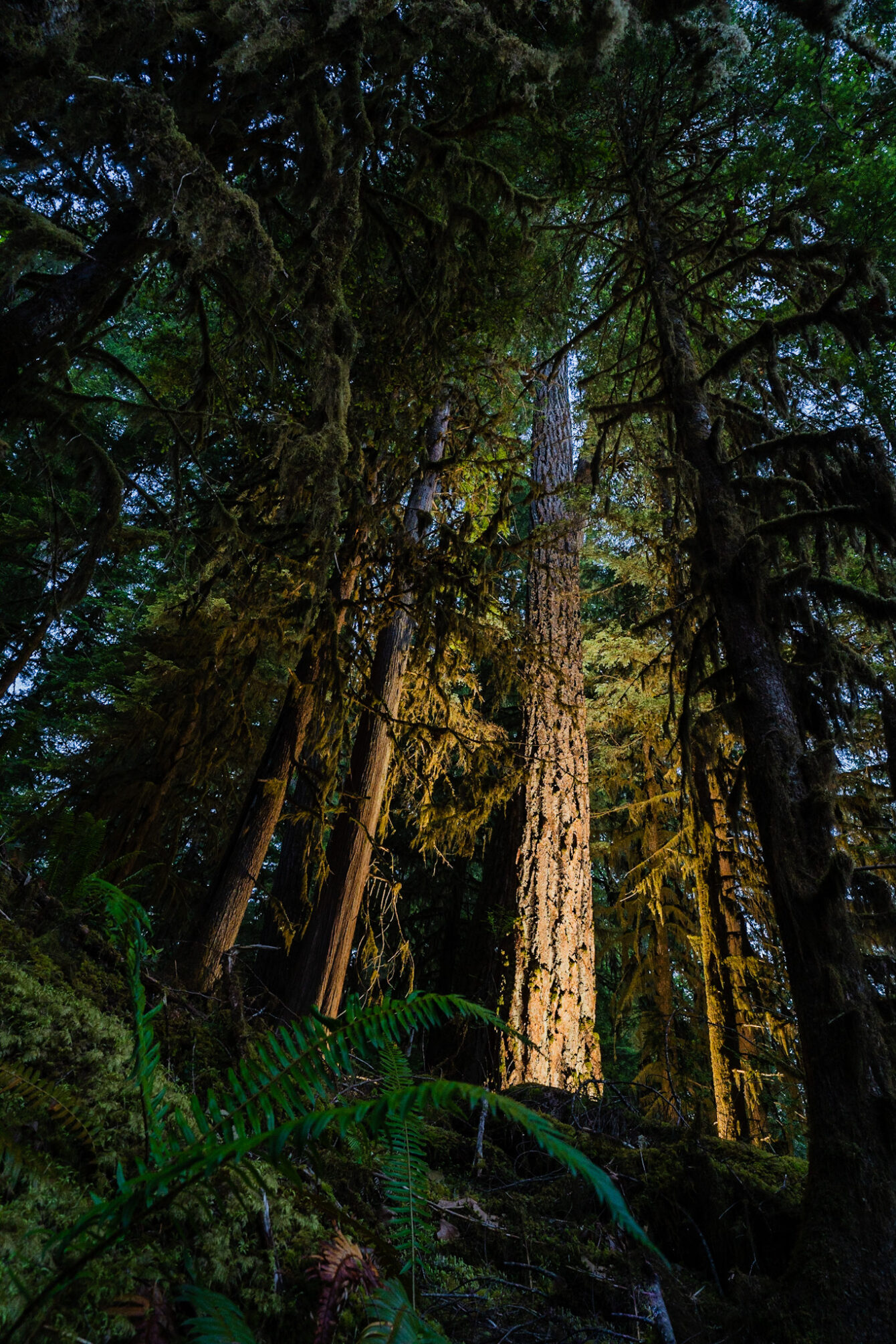
This summer, graduate student Maddie Sutton leads the standard bird surveys. But for this season, she’s also trying to bait birds to different parts of the forest, using those attractive bird calls. By playing a particular call, she can attract other individuals of the same species to the area. But playing a competitor’s calls allows her to study whether or not birds avoid other species. Coupling this data with predicted species ranges under climate change should show her where competition is likely to occur, and who might win out.
A forest in good hands
The current suite of experiments at Andrews are technology driven and ambitious. The suite, which expands far beyond the few examples above, builds on a deep history of understanding in the forest, and addresses pressing questions on how a changing climate affects the forest now. Over time, researchers will uncover the lessons learned contained in the collected data. New technology will unlock the answers to new questions, and those answers will spur new inquiry.
The LTER Network lets Andrews and other sites grow over time, affords sites the freedom to implement an ambitious research agenda, and provides sites the time and opportunity to learn and grow from successes and mistakes. With continued backing, researchers at Andrews can understand dynamics in the treetops in intense detail, just as they’ve done with the forest floor. And future researchers will be prepared to explore the next frontier, whatever part of the forest that may be.
By Gabriel De La Rosa
A special thank you to everyone who showed me around the Andrews Forest LTER, especially Mark Schulze, Joe Lamanna, Madison Sutton, Haley Martins, Cole Doolittle, Nina Ferrari, Fred Swanson, Michael Nelson, and David Buckley Borden. And a special thank you to Matt Betts, who let me take him up on his offer to visit, despite being unable to join.










